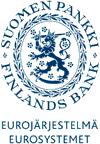 Research Discussion Papers, Bank of Finland
Research Discussion Papers, Bank of Finland
No 26/2015:
Transition to clean technology
Daron Acemoglu, Ufuk Akcigit, Douglas Hanley and William R. Kerr ()
Abstract: We develop a microeconomic model of endogenous growth
where clean and dirty technologies compete in production and innovation–in
the sense that research can be directed to either clean or dirty
technologies. If dirty technologies are more advanced to start with, the
potential transition to clean technology can be difficult both because
clean research must climb several rungs to catch up with dirty technology
and because this gap discourages research effort directed towards clean
technologies. Carbon taxes and research subsidies may nonetheless encourage
production and innovation in clean technologies, though the transition will
typically be slow. We characterize certain general properties of the
transition path from dirty to clean technology. We then estimate the model
using a combination of regression analysis on the relationship between R&D
and patents, and simulated method of moments using microdata on employment,
production, R&D, firm growth, entry and exit from the US energy sector. The
model’s quantitative implications match a range of moments not targeted in
the estimation quite well. We then characterize the optimal policy path
implied by the model and our estimates. Optimal policy makes heavy use of
research subsidies as well as carbon taxes. We use the model to evaluate
the welfare consequences of a range of alternative policies.
Keywords: carbon cycle; directed technological change; environment; innovation; optimal policy; (follow links to similar papers)
JEL-Codes: C65; O30; O31; O33; (follow links to similar papers)
57 pages, December 10, 2015
Before downloading any of the electronic versions below
you should read our statement on
copyright.
Download GhostScript
for viewing Postscript files and the
Acrobat Reader for viewing and printing pdf files.
Full text versions of the paper:
BoF_DP_1526.pdf?sequence=1 
Download Statistics
Questions (including download problems) about the papers in this series should be directed to Minna Nyman ()
Report other problems with accessing this service to Sune Karlsson ()
or Helena Lundin ().
Programing by
Design by Joachim Ekebom
 Research Discussion Papers, Bank of Finland
Research Discussion Papers, Bank of Finland
 Research Discussion Papers, Bank of Finland
Research Discussion Papers, Bank of Finland